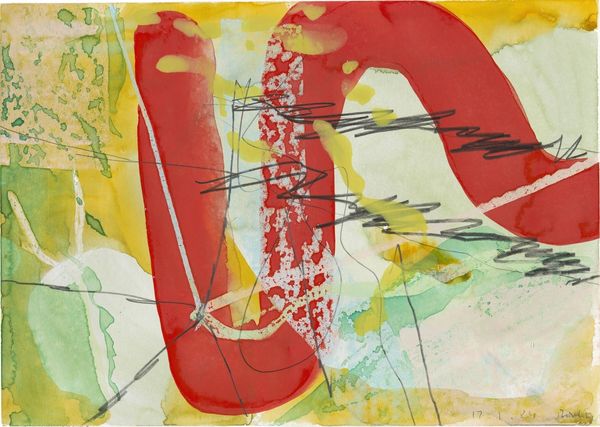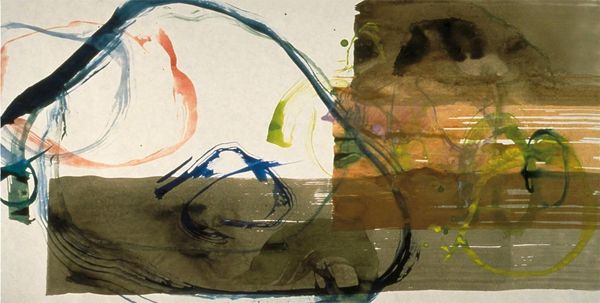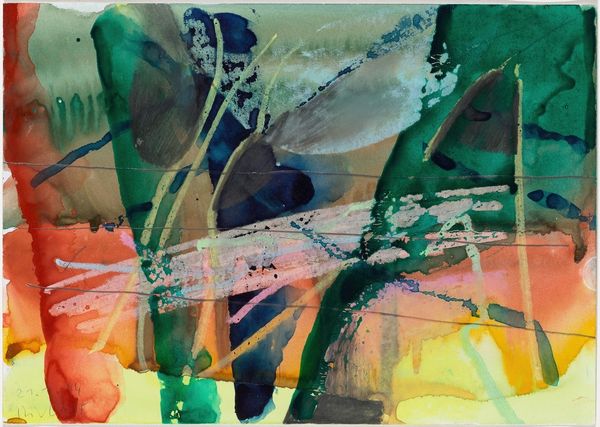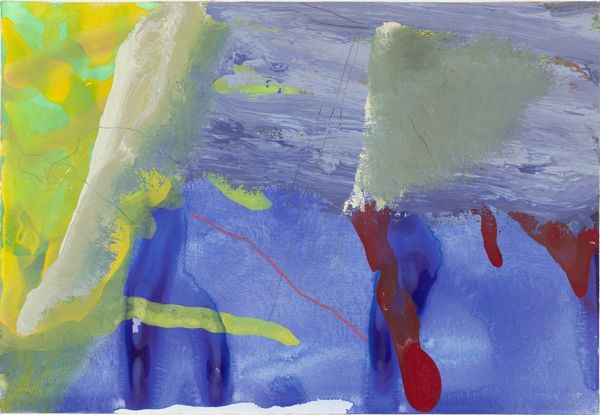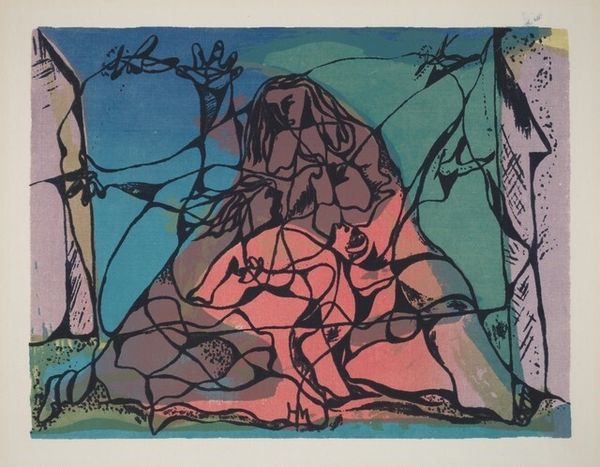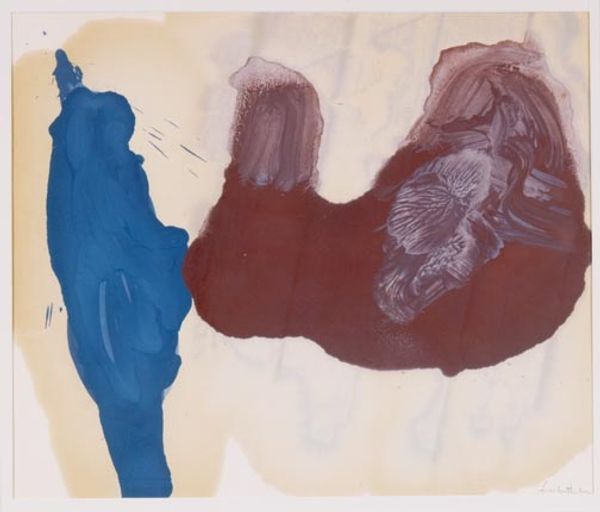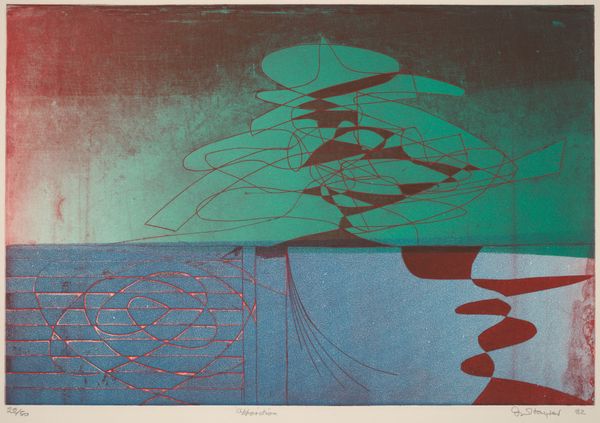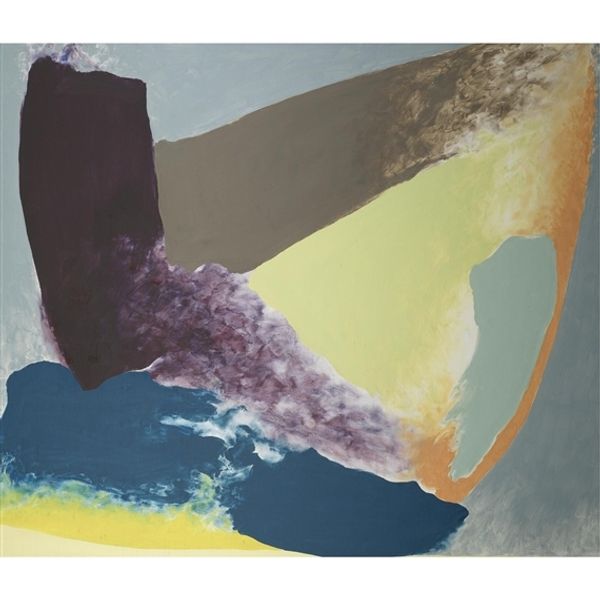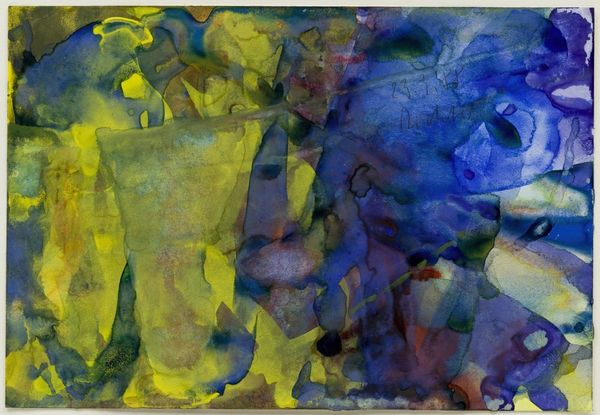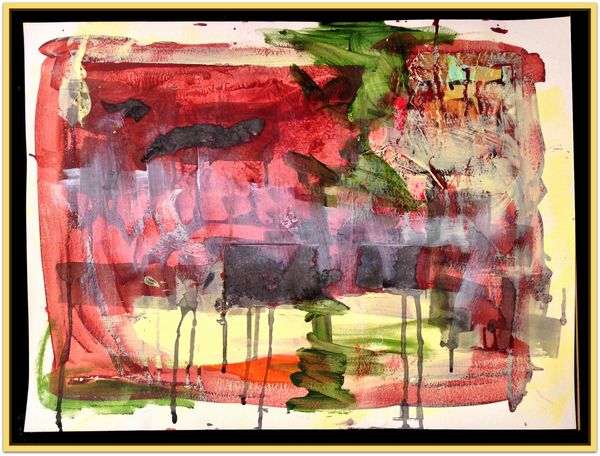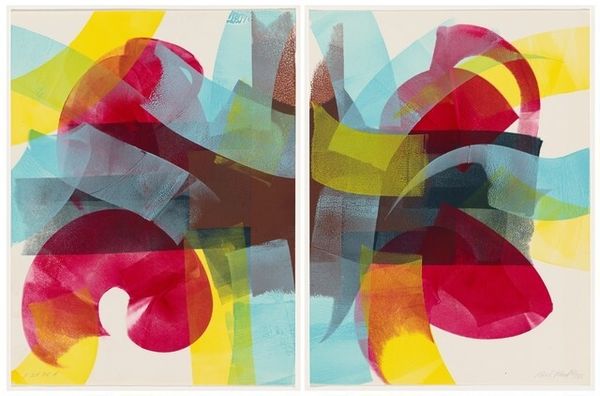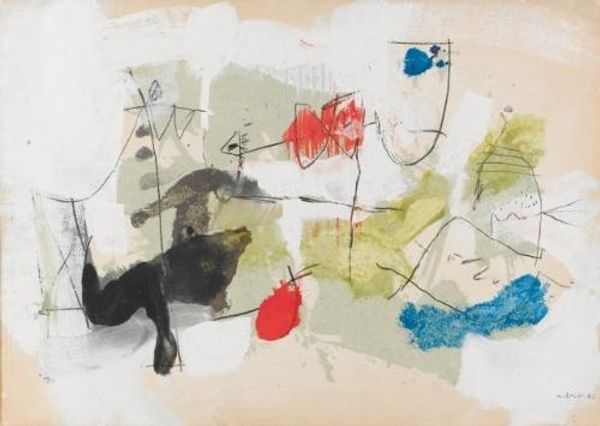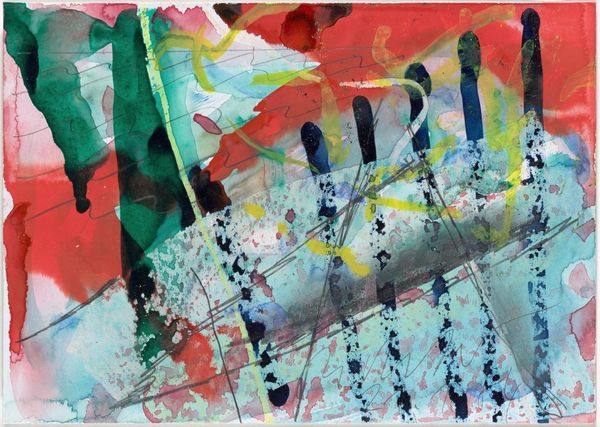
#
capitalist-realism
Copyright: Modern Artists: Artvee
Curator: This is "G.A.3," a watercolor created by Gerhard Richter in 1984. It exemplifies his experiments with abstraction. Editor: My first impression is one of dynamic tension. The bright, almost aggressive orange form clashes wonderfully with the softer, watery blues and yellows. It's as if conflicting energies are colliding on the paper. Curator: Indeed. Observe how the lines scrawled across the surface both unify and disrupt the composition. They create a visual layering, pushing the eye in multiple directions. It is also important to remember the materiality of this work – watercolour paintings on paper allows the eye to linger on transparency versus opacity, something rarely present in other mediums. Editor: I think that these colours also are key. To me, the bold colour choices here feel deliberately provocative. In the early 1980s, Europe was navigating turbulent social and political shifts. Richter's seemingly chaotic abstraction could be interpreted as reflecting that era's anxieties and the struggle for a new socio-political structure and equilibrium, if any structure was possible at all. The absence of a clear, figurative image allows viewers to project their own feelings of unease or uncertainty onto the artwork. Curator: That reading, although not traditionally Richter's specific concern, is nonetheless compelling. If you were to solely look at this abstract piece it would stand alone without any relation to external movements of that time, however there is value to situating art pieces such as "G.A.3," in contemporary, broader dialogues. Yet even considering that this watercolor technique in and of itself is quite significant within Richter's broader oeuvre: it offers an interesting perspective to evaluate artistic experimentation across mediums and genres of production. Editor: Absolutely. Approaching the piece without its surrounding context feels like deliberately erasing a piece of it's history and significance. It is a disservice to approach any artwork and the context in which the piece existed and came to life as seperate. Curator: I see value in both lenses. It has been thought provoking to look at this watercolour work by Richter. Editor: Agreed. Each method unearths a unique reading of what it means and it's value in contemporary society.
Comments
No comments
Be the first to comment and join the conversation on the ultimate creative platform.
